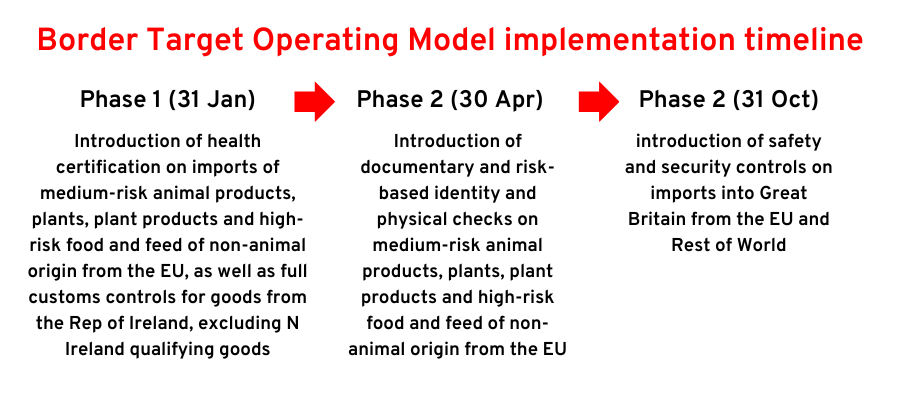🕒 Article read time: 2 minutes
2024: Ushering in a new era of post-Brexit trade
By Ellis Shelton, Policy Advisor at Logistics UK

The Border Target Operating Model (BTOM) will see new security and sanitary and phytosanitary controls apply to goods imported from the EU in a phased introduction from January 2024. The arrangement marks a significant change in customs and border procedures, and those working within international freight operations must be prepared for the implementation of the model.
A post-Brexit arrangement, the BTOM is designed to streamline import processes for goods arriving in the UK, while enhancing national and cargo security and ensuring compliance with laws governing the safe and proper importation of goods.
Due to go live on 31 January 2024, the first BTOM implementation phase will include the introduction of health certification on imports of medium-risk animal products, plants, plant products and high-risk food and feed of non-animal origin from the EU, as well as full customs controls for goods from the Republic of Ireland, excluding Northern Ireland qualifying goods.
Phase two, the introduction of documentary and risk-based identity and physical checks on medium-risk animal products, plants, plant products and high-risk food and feed of non-animal origin from the EU, will be introduced on 30 April 2024.
The date for the final phase, the introduction of safety and security controls on imports into Great Britain from the EU and Rest of World, will take effect from 31 October 2024.
THE KEY CHALLENGES
Significant details are omitted from the model in its current form, including information on how the groupage model will work and be supported and what Common User Charge the government will impose at its Border Control Posts. There is still much for the government to confirm, and the implementation dates are fast approaching.
Logistics UK will continue to press for these urgent details as well as highlight the challenges surrounding the short timelines given that adaptation of business operations and models, including developing, testing, and operationalising new IT systems, can take a minimum of six to 12 months.
This technological integration will present a key challenge for businesses and could contribute to short-term disruption before these new processes are up and running and performing at optimum levels.
THE OPPORTUNITIES AHEAD
In the medium to long term, we are likely to see improvements in border operations owing to the new model. This includes enhanced efficiencies and digitalisation via the Single Trade Window, opportunities to reach new markets, and increased competitiveness.
Adjusting to and implementing new controls will be a steep learning curve for all those affected, but individuals working within logistics operations are well versed with dealing with change and challenges. The industry will continue to work together to ensure the smooth flow of goods in the face of this next set of challenges.
Published On: 11/01/2024 14:00:00

Comments Section
If you are a Logistics UK member login to add comments.